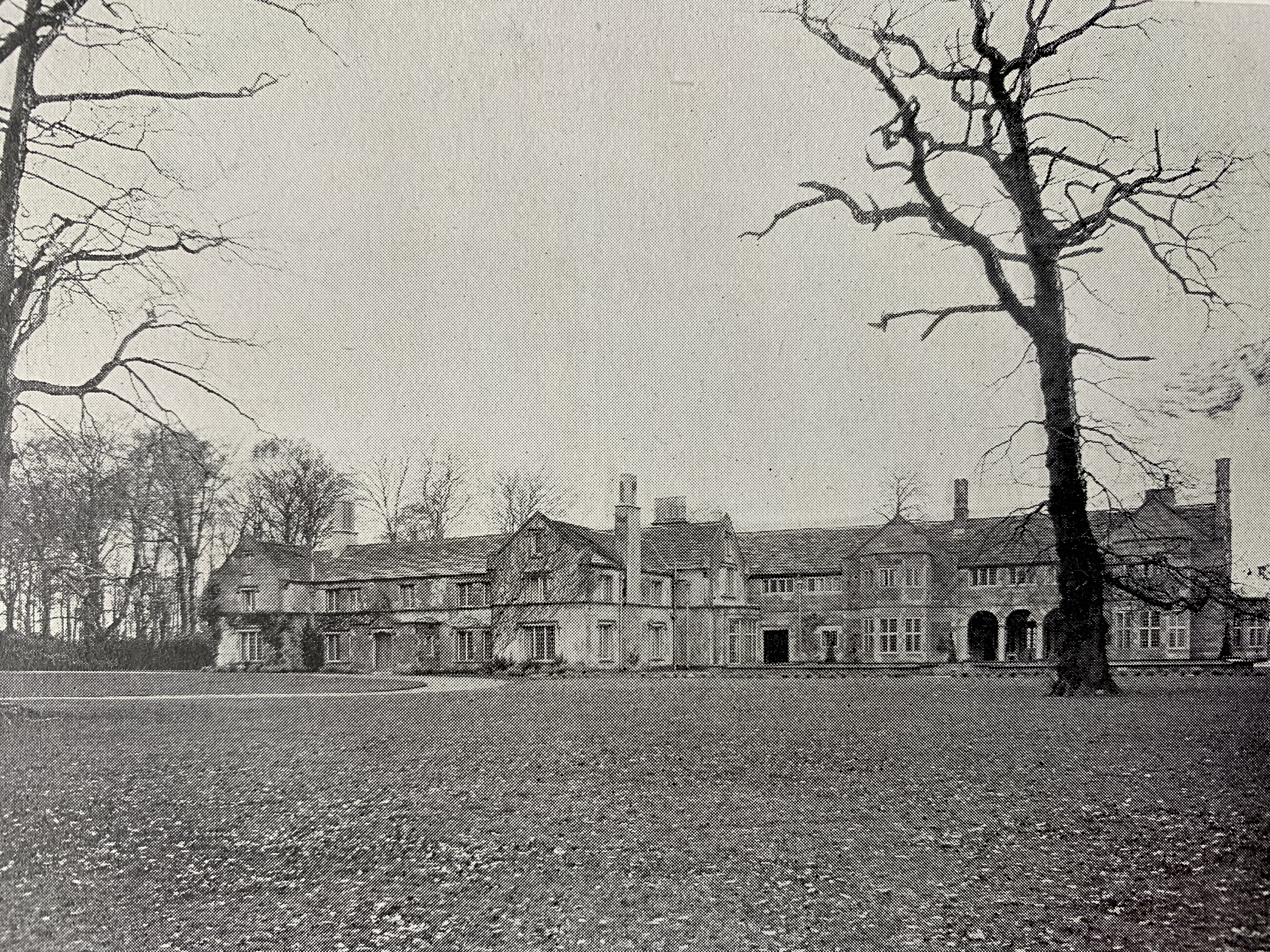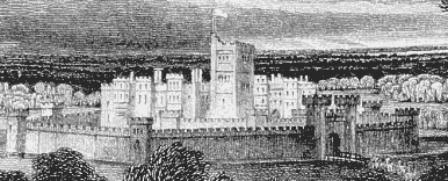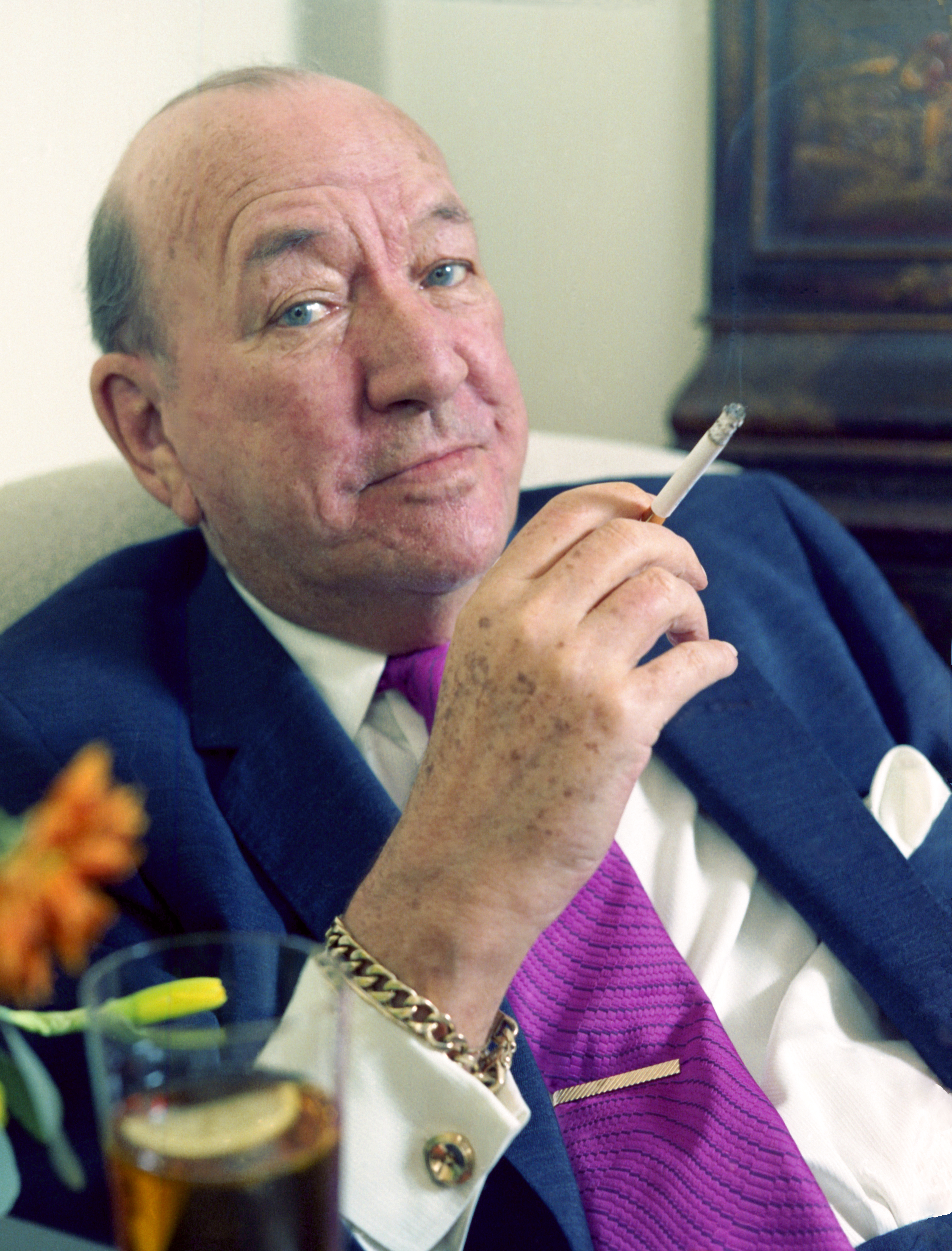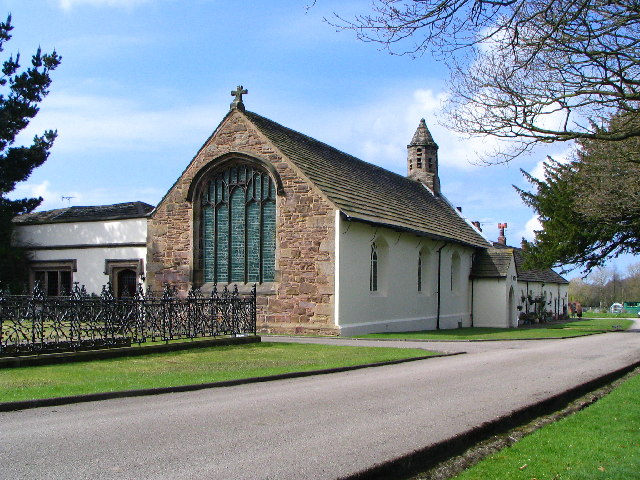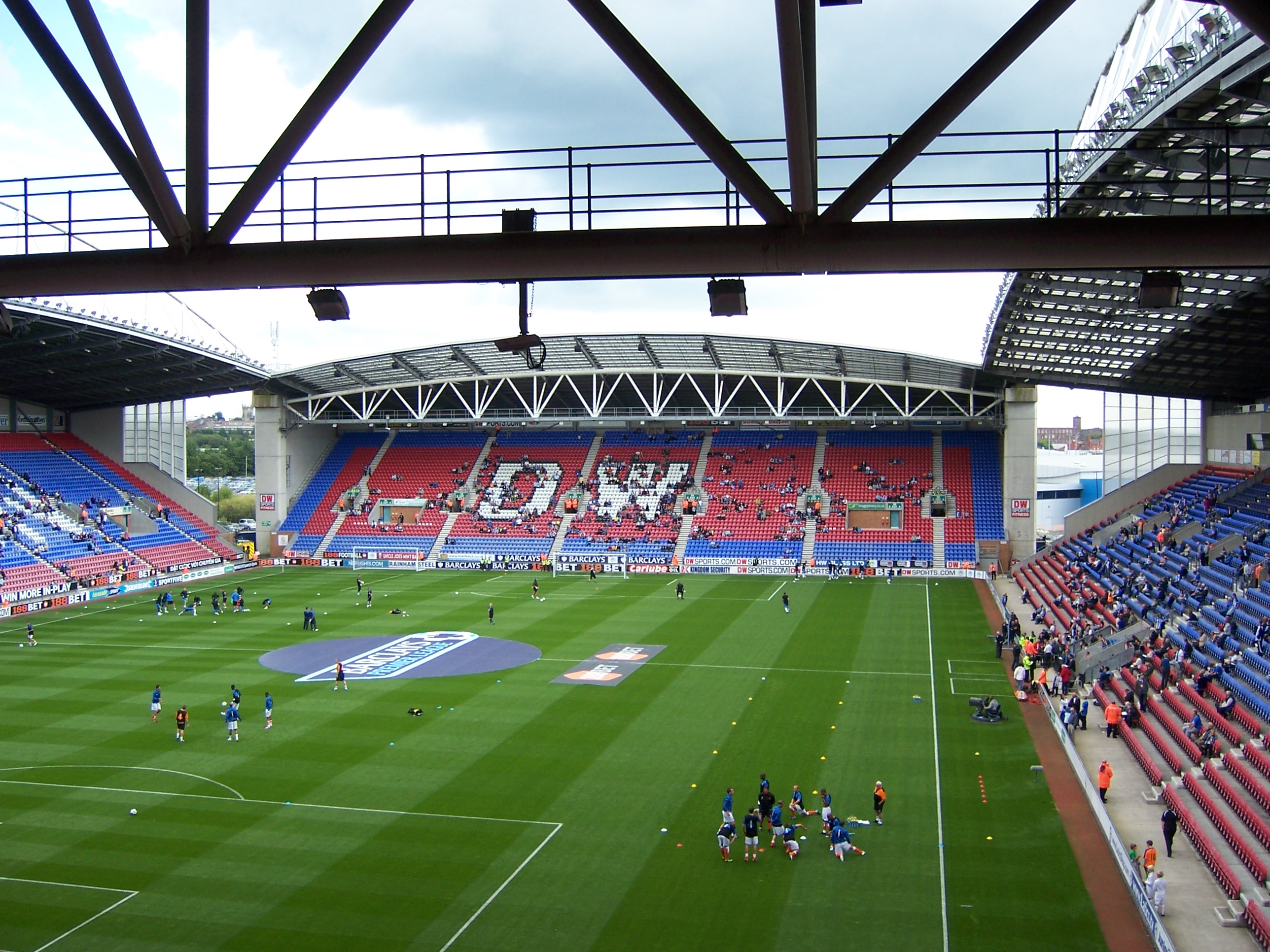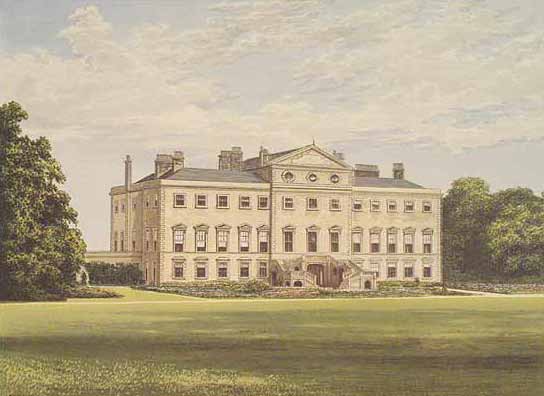|
Blythe Hall, Lathom
Blythe Hall is a large grade II listed country house in Lathom, Lancashire, England, some 3 miles (5 km) north-east of Ormskirk. It is a two-storey building of rendered sandstone rubble with stone slate roofs to an originally H-shaped plan with added wings. History Blythe Hall was probably built in the late 16th century or early 17th century and altered in early 19th century. The hall was once the property of Evan Blackledge, who died in 1612, after which it passed through several generations of the Blackledge family. It was sold to the Hill family of Burscough in 1698 and then to Thomas Langton in 1800, who never moved in but instead leased it to Edward Clifton. In 1826 it was sold to Edward Bootle-Wilbraham, 1st Baron Skelmersdale. whose eldest son and his wife Jessy lived there. Edward Bootle-Wilbraham, 1st Earl of Lathom was born in the house in 1837 and his sister, Rose Bootle-Wilbraham, was born there in 1842. Lady Alice's Drive, opposite Blythe Hall, is named after L ... [...More Info...] [...Related Items...] OR: [Wikipedia] [Google] [Baidu] |
Lathom
Lathom is a village and civil parish in Lancashire, England, about 3 miles (5 km) northeast of Ormskirk. It is in the district of West Lancashire, and with the parish of Newburgh forms part of Newburgh ward. The population of the civil parish at the 2011 census was 914. The Leeds and Liverpool Canal passes through Lathom. History Toponymy Lathom was recorded as Latune in the Domesday Book in 1086, Lathum in 1200, and Lathom in 1223 after which it was the usual spelling. Manor In 1066 the manor of Lathom was the most important of 17 manors held by Uctred, an Anglo-Danish landowner. These manors were set up by Æthelstan in the 10th century. By 1189 Robert Fitzhenry de Lathom possessed lands throughout south Lancashire, extending to Flixton in the barony of Manchester. Siward son of Dunning held the township in thanage in the reign of Henry II. Robert de Lathom, in the reign of Edward I was granted the right to hold a market and an annual fair. Robert Lathom founded Bur ... [...More Info...] [...Related Items...] OR: [Wikipedia] [Google] [Baidu] |
Noël Coward
Sir Noël Peirce Coward (16 December 189926 March 1973) was an English playwright, composer, director, actor, and singer, known for his wit, flamboyance, and what ''Time'' magazine called "a sense of personal style, a combination of cheek and chic, pose and poise"."Noel Coward at 70" ''Time'', 26 December 1969, p. 46 Coward attended a dance academy in London as a child, making his professional stage début at the age of eleven. As a teenager he was introduced into the high society in which most of his plays would be set. Coward achieved enduring success as a playwright, publishing more than 50 plays from his teens onwards. Many of his works, such as '' |
Buildings And Structures In The Borough Of West Lancashire
A building, or edifice, is an enclosed structure with a roof and walls standing more or less permanently in one place, such as a house or factory (although there's also portable buildings). Buildings come in a variety of sizes, shapes, and functions, and have been adapted throughout history for a wide number of factors, from building materials available, to weather conditions, land prices, ground conditions, specific uses, prestige, and aesthetic reasons. To better understand the term ''building'' compare the list of nonbuilding structures. Buildings serve several societal needs – primarily as shelter from weather, security, living space, privacy, to store belongings, and to comfortably live and work. A building as a shelter represents a physical division of the human habitat (a place of comfort and safety) and the ''outside'' (a place that at times may be harsh and harmful). Ever since the first cave paintings, buildings have also become objects or canvasses of much artistic ... [...More Info...] [...Related Items...] OR: [Wikipedia] [Google] [Baidu] |
Grade II Listed Buildings In Lancashire
Grade most commonly refers to: * Grade (education), a measurement of a student's performance * Grade, the number of the year a student has reached in a given educational stage * Grade (slope), the steepness of a slope Grade or grading may also refer to: Music * Grade (music), a formally assessed level of profiency in a musical instrument * Grade (band), punk rock band * Grades (producer), British electronic dance music producer and DJ Science and technology Biology and medicine * Grading (tumors), a measure of the aggressiveness of a tumor in medicine * The Grading of Recommendations Assessment, Development and Evaluation (GRADE) approach * Evolutionary grade, a paraphyletic group of organisms Geology * Graded bedding, a description of the variation in grain size through a bed in a sedimentary rock * Metamorphic grade, an indicatation of the degree of metamorphism of rocks * Ore grade, a measure that describes the concentration of a valuable natural material in the surroundi ... [...More Info...] [...Related Items...] OR: [Wikipedia] [Google] [Baidu] |
Country Houses In Lancashire
A country is a distinct part of the world, such as a state, nation, or other political entity. It may be a sovereign state or make up one part of a larger state. For example, the country of Japan is an independent, sovereign state, while the country of Wales is a component of a multi-part sovereign state, the United Kingdom. A country may be a historically sovereign area (such as Korea), a currently sovereign territory with a unified government (such as Senegal), or a non-sovereign geographic region associated with certain distinct political, ethnic, or cultural characteristics (such as the Basque Country). The definition and usage of the word "country" is flexible and has changed over time. ''The Economist'' wrote in 2010 that "any attempt to find a clear definition of a country soon runs into a thicket of exceptions and anomalies." Most sovereign states, but not all countries, are members of the United Nations. The largest country by area is Russia, while the smallest is ... [...More Info...] [...Related Items...] OR: [Wikipedia] [Google] [Baidu] |
Listed Buildings In Lathom
Lathom is a Civil parishes in England, civil parish in the West Lancashire district of Lancashire, England. It contains 49 buildings that are recorded in the National Heritage List for England as designated listed buildings. Of these, one is at Grade II*, the middle grade, and the others are at Grade II, the lowest grade. The parish contains the village of Lathom, and is otherwise rural. The most important building in the parish is Lathom House, but most of this has been demolished, leaving only part of one wing. This is listed, together with structures associated with it. The Leeds and Liverpool Canal and its Rufford branch run through the parish, and the associated listed structures include culverts, Lock (water transport), locks and bridges. There are also three former railway level crossing keeper's cottages built for the Manchester and Southport Railway. Because of its rural nature, many of the listed buildings are farmhouses and farm buildings. The other li ... [...More Info...] [...Related Items...] OR: [Wikipedia] [Google] [Baidu] |
David Whelan
David Whelan (born 24 November 1936) is an English businessman and former footballer. During his football career, he played for Blackburn Rovers and Crewe Alexandra. Whelan is the former owner of club Wigan Athletic, having also been the chairman of the club for twenty years, before passing the position over to his grandson, David Sharpe, who eventually passed the ownership over to International Entertainment Corporation. Early life Whelan was born in Bradford and raised in Wigan. His forebears hailed from County Tipperary, Ireland. Football career Whelan played 78 times as a left back, scoring three times, for Blackburn Rovers and was a member of its 1960 FA Cup Final team, which lost 3–0 to Wolverhampton Wanderers. Whelan himself did not complete the game, a feisty challenge from Whelan on Norman Deeley culminated in the Blackburn man being withdrawn before half time due to a broken leg. Whelan's injury is one of many serious injuries suffered by players in the 1950–60 ... [...More Info...] [...Related Items...] OR: [Wikipedia] [Google] [Baidu] |
Blythe Hall - Lancashire
The name Blythe ( or ) derives from Old English ''bliþe'' ("joyous, kind, cheerful, pleasant"; modern ''blithe''), and further back from Proto-Germanic ''*blithiz'' ("gentle, kind"). People *Blythe (given name), including a list of people named Blythe *Blythe (surname), including a list of people with the surname Blythe Places *Blythe, California, United States *Blythe, Georgia, United States *Blythe Township, Schuylkill County, Pennsylvania, United States *Blythe Bay, Antarctica *Blythe River, river in New Zealand *Blythe River (Tasmania), river in Tasmania, Australia *River Blithe, Staffordshire, United Kingdom *River Blythe, Warwickshire, United Kingdom *Blythe Hill Fields, London, United Kingdom *Blythe Bridge, Staffordshire, United Kingdom Other *Blythe (doll) See also *Blithe (other) *Blyth (other) *Blyth River (Northern Territory) *River Blyth (other) River Blyth is the name of several rivers in England. *River Blyth, Northumberland *River Bly ... [...More Info...] [...Related Items...] OR: [Wikipedia] [Google] [Baidu] |
Ivor Novello
Ivor Novello (born David Ivor Davies; 15 January 1893 – 6 March 1951) was a Welsh actor, dramatist, singer and composer who became one of the most popular British entertainers of the first half of the 20th century. He was born into a musical family, and his first successes were as a songwriter. His first big hit was " Keep the Home Fires Burning" (1914), which was enormously popular during the First World War. His 1917 show, ''Theodore & Co'', was a wartime hit. After the war, Novello contributed numbers to several successful musical comedies and was eventually commissioned to write the scores of complete shows. He wrote his musicals in the style of operetta and often composed his music to the libretti of Christopher Hassall. In the 1920s he turned to acting, first in British films and then on stage, with considerable success in both. He starred in two silent films directed by Alfred Hitchcock, '' The Lodger'' and ''Downhill'' (both 1927). On stage, he played the title charact ... [...More Info...] [...Related Items...] OR: [Wikipedia] [Google] [Baidu] |
Lancashire
Lancashire ( , ; abbreviated Lancs) is the name of a historic county, ceremonial county, and non-metropolitan county in North West England. The boundaries of these three areas differ significantly. The non-metropolitan county of Lancashire was created by the Local Government Act 1972. It is administered by Lancashire County Council, based in Preston, and twelve district councils. Although Lancaster is still considered the county town, Preston is the administrative centre of the non-metropolitan county. The ceremonial county has the same boundaries except that it also includes Blackpool and Blackburn with Darwen, which are unitary authorities. The historic county of Lancashire is larger and includes the cities of Manchester and Liverpool as well as the Furness and Cartmel peninsulas, but excludes Bowland area of the West Riding of Yorkshire transferred to the non-metropolitan county in 1974 History Before the county During Roman times the area was part of the Bri ... [...More Info...] [...Related Items...] OR: [Wikipedia] [Google] [Baidu] |
Lathom House
Lathom House was a large country house in the parish of Lathom in Lancashire, England. Built between 1725 and 1740, the main block was demolished in 1925. Early history A wooden castle is believed to have stood on the site in mediaeval times. Sir John I Stanley of the Isle of Man (1350–1414), Lord Lieutenant of Ireland and King of Mann married Isabel Latham, daughter and heiress of Sir Thomas Latham of Latham. The stone-built castle known as Lathom House, built by the Audley-Stanley family, Stanley family in 1496, had eighteen towers, and was surrounded by a wall six foot thick and a moat eight yards wide, its drawbridge defended by a gateway tower. In the centre of the site was a tall tower known as the Eagle Tower. In 1554, Protestant martyr George Marsh (martyr), George Marsh, was questioned at Lathom House by Edward Stanley, 3rd Earl of Derby before being sent to Lancaster Castle. Lathom House was the last Royalist stronghold in Lancashire during the English Civil War a ... [...More Info...] [...Related Items...] OR: [Wikipedia] [Google] [Baidu] |
Edward Bootle-Wilbraham, 1st Earl Of Lathom
Edward Bootle-Wilbraham, 1st Earl of Lathom (12 December 1837 – 19 November 1898), known as The Lord Skelmersdale between 1853 and 1880, was a British Conservative politician. He was a member of every Conservative administration between 1866 and 1898, and notably served three times as Lord Chamberlain of the Household under Lord Salisbury. Having succeeded his grandfather as Baron Skelmersdale in 1853, he was created Earl of Lathom in 1880. Early life Bootle-Wilbraham was born at Blythe Hall, Lathom, Lancashire, the son of Hon. Richard Bootle-Wilbraham, MP, eldest son of Edward Bootle-Wilbraham, 1st Baron Skelmersdale. His mother was Jessy, daughter of Sir Richard Brooke, 6th Baronet of Norton. His father died when Edward was only 7 years old and he was brought up by his grandparents at nearby Lathom House. He was educated at Eton and Christ Church, Oxford. Whilst a student at Oxford he was initiated into the Apollo University Lodge No 357, and became an active Freemason. ... [...More Info...] [...Related Items...] OR: [Wikipedia] [Google] [Baidu] |
